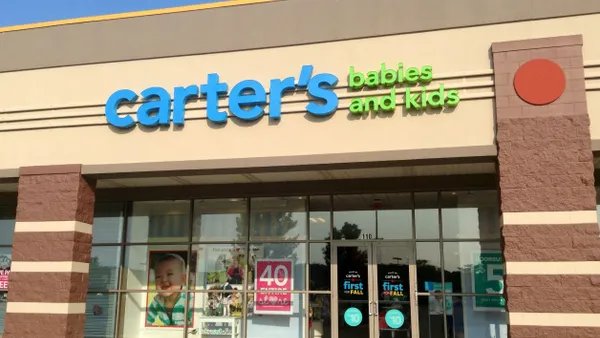Dive Brief:
- Dollar stores got another boost from pandemic-driven shopping during the second quarter. Dollar General comparable sales increased in consumables, home, apparel and seasonal categories, with the company saying that "consumer behavior driven by COVID-19 had a significant positive effect" on sales, according to a press release.
- All told, Dollar General's net sales rose 24.4%, to $8.7 billion, in Q2, while comps rose 18.8%. Even with pandemic-related expenses, operating profit was up 80.5%. The company said it plans to accelerate some of its strategic pushes, including the rollout of Pickup and Fresh, and its non-consumables initiative. The company also plans to remodel and relocate more stores than initially planned.
- Rival Dollar Tree also posted strong sales increases, with comps up 11.6% in its Family Dollar banner and up 3.1% in its namesake banner. Operating income rose as well, by 39.4%.
Dive Insight:
Like Walmart, Target and other general merchandisers, the dollar stores have seen surges in demand as consumers consolidate their shopping trips and avoid malls and other retail areas.
Dollar General saw less traffic at its stores, but high ticket values more than made up for it. Sales of more non-consumable products, as well as higher markups, helped boost profit margins along with sales even as higher distribution costs cut into gross profit. Dollar General also took on incremental costs related to COVID-19, including increases in employee compensation, but those too were offset by the spike in sales.
Neil Saunders, managing director for GlobalData Retail, pointed out that Dollar General benefited from more consumers staying at home and not dining out, which helped increase the volume of food sold at the dollar store retailer, while less leisure and work travel means shoppers are hitting stores closer to home more. That plays right to Dollar General's benefit, given its 17,000 stores around the country.
Wells Fargo analysts said in an emailed note that Dollar General's Q2 numbers stood as a reminder of "just how well positioned the company is to take advantage of the current environment" with gross margin a "standout."
For the initial weeks of August, Dollar General said comps were up 15%. That represents a slowdown from Q2, but the Wells Fargo team said this was expected, and that "the minimal slowdown is impressive given the easing of stimulus and a soft back to school season."
As is often the case, Dollar General's performance overshadowed that of its rival, Dollar Tree. While Saunders described the latter's Q2 figures as "respectable," he added Dollar General's sales "put Dollar Tree firmly in the shade."
"In our view the contrast is a shorthand for what has been happening during the pandemic: those retailers with a strong food and essentials offer have benefitted from significantly higher spend and increased customer penetration, while those without have found it much harder to generate momentum," he said.
The Dollar Tree banner was the laggard during the quarter, and that, too, could be driven by pandemic shopping habits. As Saunders explained, Family Dollar is more focused on food and consumables and got a boost from higher levels of spending on those items as well as from geography, with its stores positioned more conveniently to consumers compared with its sister banner.
On the whole, the retailer made important sales gains especially when compared against the broader retail environment. Telsey Advisory Group analysts said in an emailed note that Dollar Tree is "well-positioned to gain market share in a tough macro environment, given its convenient locations, value-focused merchandise (including half the items priced at $1 and private brands), and defensive product mix of consumables and essentials."













